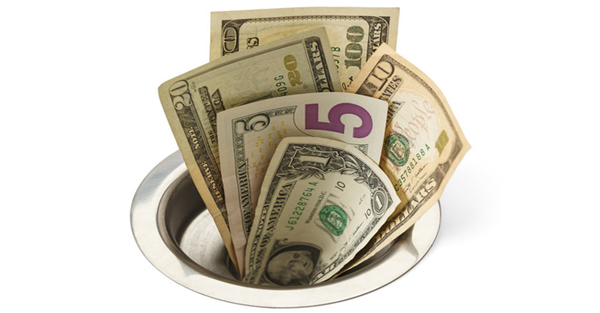
The dollar has an opportunity to make history. After three straight years of gains, strategists are forecasting the US currency will be a world beater again in 2016, strengthening against seven of 10 developed world peers by the end of the year. – Median estimate from Bloomberg Survey
Two data points may establish a trend. Three can confirm the trend – with a margin of error.
But what happens when six data points line up in the same direction?
It’s a full-blown, screaming signal.
While strategists at Bloomberg are optimistic about the dollar’s continued strength in the coming years, our analysis of six separate data points tells a very different story.
The six data point signal is the U.S. Dollar Index, an index that measures the performance of the dollar against a basket of six currencies – the Euro, Japanese yen, British pound, Swiss franc, Canadian dollar, and Swedish krona.
Post-U.S. financial crisis of 2008, King dollar had tremendous gains against these six currencies. The lowest gain was against the British pound at 19%, with the rise starting in 2014. Also with the rise dating from 2014, the U.S. dollar gained 24% against the Euro.
In 2011 the USD started its rise against the Canadian dollar, Swedish krona, and Swiss franc. The dollar would go on to post gains of 35%, 32%, and 30%, respectively.
Ever since the so-called U.S. economic “recovery” – no doubt orchestrated by the D.C. economic geniuses – King dollar has had its time in the sun. And many, both in and outside of the D.C. establishment – think the good times will continue.
But the point of this article is not to highlight the dollar’s rise in recent years. Instead, the point is to highlight the dollars’ even more recent fall against these half-dozen currencies.
The past six months have not been kind to the dollar’s value against the currency basket. To be clear, the dollar still remains strong and, in the meantime at least, it will continue to be king. However, chinks in the dollar’s armor have appeared.
The data proves it.
Going back in the data for five years, against five of the six currencies – the yen as the exception – the dollar peaked anywhere from November 2015 through February 2016. The dollar peaked against the yen a bit earlier, in June 2015.
In the past six months, the USD has declined against all six of these currencies. From a low in the range of a 5-7% pullback against the pound, Canadian dollar, Euro, and Swiss franc since the respective highs to a 10% and 12% decline against the yen and krona, respectively, the USD has a trend: down.
Conclusion:
The relative strength that the U.S. dollar has seen in recent years is fading.
And the further acceleration is likely in coming years, only adding fuel to the inevitable inflationary fire. Which means less and less purchasing power for those holding dollars.
Unfortunately, all fiat currencies are in a race to the bottom. But it’s not all gloom and doom. Fortunately, there are alternatives – currencies in other jurisdictions that will better hold your purchasing power.
Certainly, as will be evident in the coming years, U.S. dollars are no longer a place to store your entire life’s savings. Diversification into other currencies is paramount.
